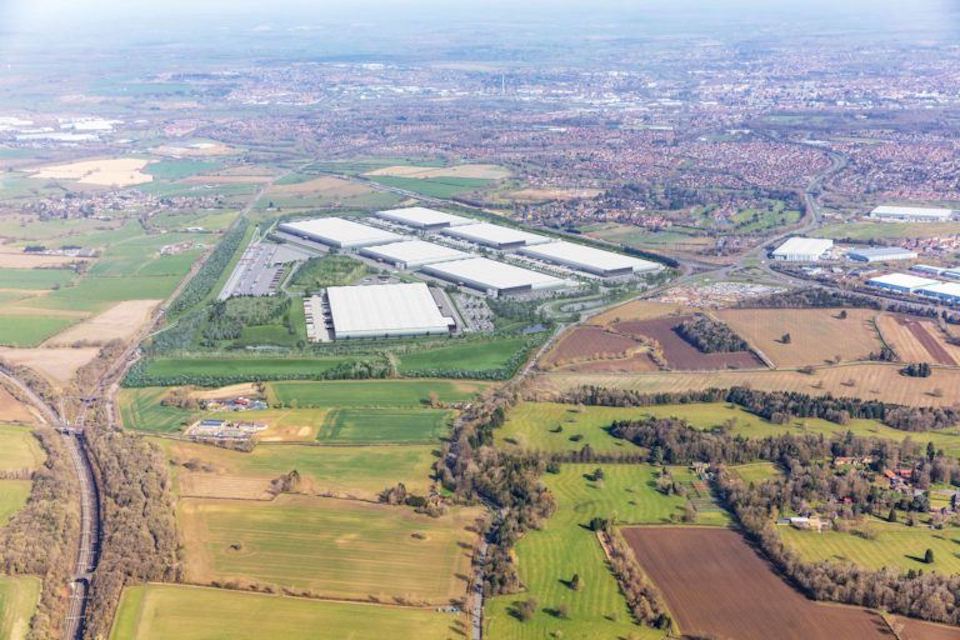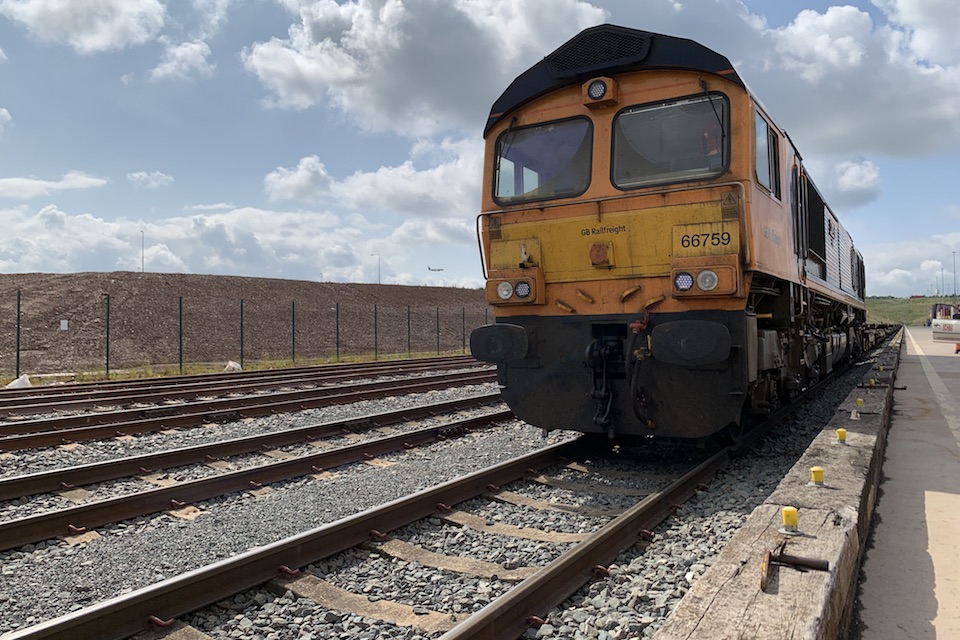UK legal review for St Albans Radlett rail freight terminal proposals

The long-running argument over a home-counties rail freight terminal continues in the UK. Campaigners against plans for a new rail freight interchange on the site of the former Radlett airfield near St Albans say they expect to hear the result of a judicial review as early as the beginning of next year. Logistics developers SEGRO have earmarked the site, just north of London, for a rail-served logistics park with an on-site intermodal terminal.
Objectors who lodged a court action in September hope a late legal decision will derail plans for a rail freight terminal in their backyard. The campaign group ‘Save St Albans: Fight the Freight’ have lodged a legal challenge against selling land for a rail freight terminal on what they designate as Green Belt land, largely reserved from development. They hope the local authority, Hertfordshire County Council, will be forced to reverse their decision to sell a 300-acre land parcel (120 hectares) to developers SEGRO. The group has been against the proposal to build on the site for over a decade. SEGRO first applied for planning permission back in 2009.
Campaigners hotly contest land deal
The lengthy planning process in the UK has given the campaigners opposing the rail freight terminal at Radlett near St Albans a further opportunity to state their case. The would-be developers, SEGRO, who have a long track record of delivery in the logistics sector, will also have the opportunity for the presiding judge to review the evidence from the company. The developer bought the land from the local authority and other owners at the end of June. SEGRO have long held plans to build a logistics park served by a new rail freight terminal. Opposition campaigners habitually conflate the size of the logistics park with the size of the rail installation, which, in truth, is likely to be a small part of the development.

The land sits alongside the Midland Main Line, and it is strategically located close to several major highways (including the north-south M1 and A1(M) and the London orbital motorway, the M25). The three sections of land that make up the site have been acquired for 120 million pounds (140 million euros). Part of the land was acquired from Hertfordshire County Council in a hotly contested deal, which campaigners claim should not have been allowed. Under SEGRO’s ownership, the site will be developed into a strategic rail freight interchange supported by up to 3.6 million square feet of modern, sustainable logistics warehousing and offices and industrial units.
Sustainable movement of goods and services
SEGRO received planning permission from the Secretary of State for the development, which is recognised by the Government as a nationally significant infrastructure project. They say it will also form a key part of the UK’s modal shift from road to rail and help meet the country’s net-zero ambitions. They could have been forgiven if they had walked away from the project before now, but the company is well used to the extraordinarily protected planning permission process in the UK. “The former Radlett Aerodrome site offers a rare opportunity to bring together the economic and environmental benefits of rail freight”, said David Sleath, Chief Executive at SEGRO. “[It] provides connectivity to key arteries of the highways network and access to a large pool of employees. The scheme will also benefit the national and local economies and help satisfy the demands of consumers and businesses for the sustainable movement of the goods and services we increasingly rely on in our daily lives.”
Construction works are yet to start on site, but had originally been intended to break ground during the Summer of this year (2023). SEGRO say the initial focus is on creating the rail connection and preparing the site for development. It is anticipated that the completed scheme will deliver around 4,000 jobs, with around 500 jobs generated on-site during construction. This does not sway the campaigners who maintain that the rail terminal is a phantom and will not be built. However, the government designation at a strategic rail freight interchange and the developments at other SEGRO sites, notably East Midlands Gateway, suggest that the promise of a rail freight terminal will be fulfilled.
It is common for rail freight developments to be opposed by local concerns, but opposition to development is not confined to the railways. The UK government has brought forward proposals to radically review the planning framework. The primary intention is to make development of land for housing less circuitous. That review may just be the move to bring proposals like the Radlett terminal into fruition.




